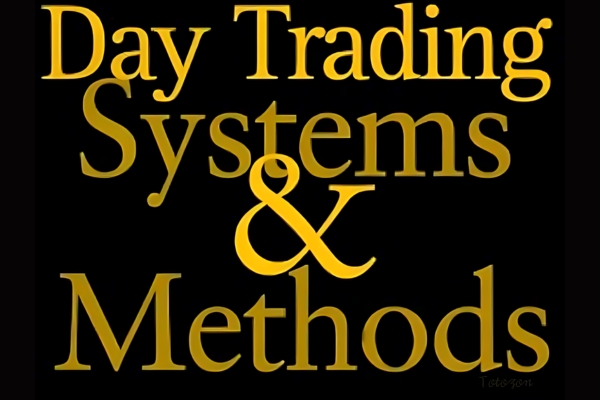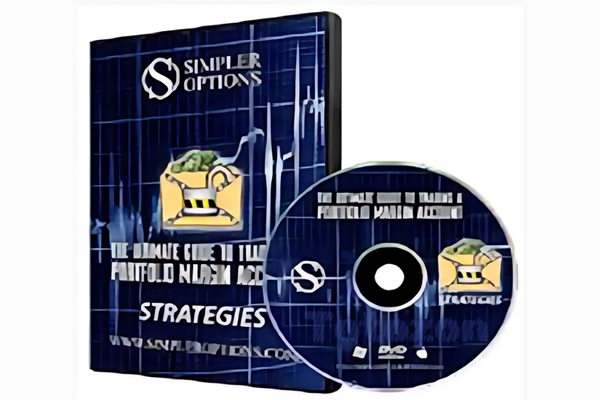-
×
 The Orderflows Trade Opportunities Encyclopedia with Michael Valtos
1 × $8.00
The Orderflows Trade Opportunities Encyclopedia with Michael Valtos
1 × $8.00 -
×
 Trading Short TermSame Day Trades Sep 2023 with Dan Sheridan & Mark Fenton - Sheridan Options Mentoring
1 × $31.00
Trading Short TermSame Day Trades Sep 2023 with Dan Sheridan & Mark Fenton - Sheridan Options Mentoring
1 × $31.00 -
×
 The Orderflow Masterclass with PrimeTrading
1 × $17.00
The Orderflow Masterclass with PrimeTrading
1 × $17.00 -
×
 Option Insanity Strategy with PDS Trader
1 × $69.00
Option Insanity Strategy with PDS Trader
1 × $69.00 -
×
 Day Trading Systems & Methods with Charles Le Beau, David Lucas
1 × $6.00
Day Trading Systems & Methods with Charles Le Beau, David Lucas
1 × $6.00 -
×
 Crypto Trading Academy with Cheeky Investor - Aussie Day Trader
1 × $13.00
Crypto Trading Academy with Cheeky Investor - Aussie Day Trader
1 × $13.00 -
×
 How To Read The Market Professionally with TradeSmart
1 × $27.00
How To Read The Market Professionally with TradeSmart
1 × $27.00 -
×
 Trading Connors VIX Reversals Tradestation Files with Laurence A. Connors & Gregory J. Che
1 × $6.00
Trading Connors VIX Reversals Tradestation Files with Laurence A. Connors & Gregory J. Che
1 × $6.00 -
×
 Boomer Quick Profits Day Trading Course
1 × $23.00
Boomer Quick Profits Day Trading Course
1 × $23.00 -
×
 Essentials in Quantitative Trading QT01 By HangukQuant's
1 × $23.00
Essentials in Quantitative Trading QT01 By HangukQuant's
1 × $23.00 -
×
 White Phoenix’s The Smart (Money) Approach to Trading with Jayson Casper
1 × $39.00
White Phoenix’s The Smart (Money) Approach to Trading with Jayson Casper
1 × $39.00 -
×
 The Prop Trading Code with Brannigan Barrett - Axia Futures
1 × $23.00
The Prop Trading Code with Brannigan Barrett - Axia Futures
1 × $23.00 -
×
 The Naked Eye: Raw Data Analytics with Edgar Torres - Raw Data Analytics
1 × $8.00
The Naked Eye: Raw Data Analytics with Edgar Torres - Raw Data Analytics
1 × $8.00 -
×
 Crystal Ball Pack PLUS bonus Live Trade By Pat Mitchell - Trick Trades
1 × $20.00
Crystal Ball Pack PLUS bonus Live Trade By Pat Mitchell - Trick Trades
1 × $20.00 -
×
 Home Run Options Trading Course with Dave Aquino - Base Camp Trading
1 × $11.00
Home Run Options Trading Course with Dave Aquino - Base Camp Trading
1 × $11.00
Ultimate Guide to Trading a Portfolio Margin Account
$1,999.00 Original price was: $1,999.00.$54.00Current price is: $54.00.
File Size: Coming soon!
Delivery Time: 1–12 hours
Media Type: Online Course
Portfolio Margin Account: Ultimate Guide to Trading Strategies
Trading a portfolio margin account can significantly enhance your trading capabilities by offering greater leverage and flexibility. In this comprehensive guide, we will delve into everything you need to know about trading a portfolio margin account, from the basics to advanced strategies. Let’s embark on this journey together and uncover the potential benefits and risks associated with portfolio margin accounts.
Understanding Portfolio Margin Accounts
What is a Portfolio Margin Account?
A portfolio margin account is a type of brokerage account that uses a risk-based margin calculation methodology. This approach can provide traders with lower margin requirements compared to standard margin accounts, allowing for greater leverage.
Benefits of a Portfolio Margin Account
- Increased Leverage: Allows for more significant positions with less capital.
- Lower Margin Requirements: Based on the overall risk of the portfolio rather than individual positions.
- Flexibility in Trading Strategies: Enables complex strategies that would be limited in a standard margin account.
Eligibility Criteria
To qualify for a portfolio margin account, traders typically need:
- A minimum account balance, often $100,000.
- Experience and knowledge in trading, as assessed by the brokerage.
Setting Up a Portfolio Margin Account
Choosing the Right Brokerage
Not all brokerages offer portfolio margin accounts. Look for brokerages with:
- A solid reputation and reliability.
- Competitive margin rates.
- Comprehensive trading tools and platforms.
Application Process
- Complete the Application: Provide financial information and trading experience.
- Approval: Brokerages will review your application and approve based on their criteria.
- Funding Your Account: Deposit the required minimum balance.
Margin Calculations and Risk Management
How Margin is Calculated
Portfolio margin calculations are based on the potential risk of your entire portfolio. This method considers:
- The correlation between different securities.
- Volatility and market conditions.
- Potential worst-case scenarios.
Managing Risk
- Diversification: Spread investments across various asset classes to mitigate risk.
- Regular Monitoring: Keep an eye on your portfolio and margin requirements.
- Use of Stop-Loss Orders: Protect against significant losses.
Trading Strategies with Portfolio Margin Accounts
Long and Short Positions
Portfolio margin accounts allow for both long and short positions, providing flexibility in various market conditions.
Options Trading
- Covered Calls: Selling call options on stocks you own to generate income.
- Protective Puts: Buying put options to hedge against potential losses.
Complex Strategies
- Iron Condors: A neutral strategy using four options contracts to profit from low volatility.
- Butterfly Spreads: A limited risk, limited profit strategy that benefits from low volatility.
Advantages and Disadvantages
Advantages
- Increased Leverage: More significant potential returns with less capital.
- Flexibility: Ability to employ various trading strategies.
- Efficiency: Lower margin requirements based on overall portfolio risk.
Disadvantages
- Increased Risk: Potential for significant losses due to high leverage.
- Complexity: Requires a thorough understanding of trading and risk management.
- Eligibility Requirements: Higher entry barrier compared to standard margin accounts.
Case Studies
Successful Trader’s Experience
John, an experienced trader, leveraged a portfolio margin account to maximize his returns. By utilizing various options strategies, he managed to generate consistent profits while maintaining a balanced risk profile.
Challenges Faced by New Traders
New traders often underestimate the risks associated with portfolio margin accounts. Proper education and risk management are crucial to avoid substantial losses.
Common Mistakes to Avoid
Over-Leveraging
Taking on too much leverage can lead to significant losses. Always manage leverage prudently.
Ignoring Risk Management
Neglecting risk management strategies can result in catastrophic losses. Use stop-loss orders and diversify your portfolio.
Lack of Knowledge
Trading without adequate knowledge can be detrimental. Educate yourself thoroughly before diving into portfolio margin trading.
Conclusion
Trading a portfolio margin account offers numerous benefits, including increased leverage and flexibility. However, it also comes with significant risks that require careful management and a thorough understanding of trading strategies. By following the guidelines and strategies outlined in this guide, you can make the most of your portfolio margin account and enhance your trading performance.
Commonly Asked Questions:
- Business Model Innovation: Accept the truth of a legitimate business! Our strategy is organising a group buy in which participants share the costs. We use these cash to acquire popular courses from sale pages and make them available to people with limited financial resources. Despite the authors’ worries, our clients love the cost and accessibility we give.
- The Legal Environment: Yes or No The legality of our activity is ambiguous. While we don’t have specific permission from the course authors to resell the material, there is a technicality at work. The author did not specify any limits on resale when purchasing the course. This legal intricacy is both an opportunity for us and a boon for individuals looking for low-cost access.
- Quality Control: Uncovering the Truth
Getting to the heart of the issue – quality. Purchasing the course straight from the sale page guarantees that all documents and resources are the same as those obtained through traditional channels.
However, we distinguish ourselves by going beyond personal research and resale. It is crucial to note that we are not the official course providers, which means that the following premium services are not included in our package:
- There are no scheduled coaching calls or sessions with the author.
- Access to the author’s private Facebook group or web portal is not permitted.
- No access to the author’s private membership forum.
- There is no direct email support available from the author or their team.
We operate independently, with the goal of bridging the pricing gap without the extra services provided by official course channels. Your comprehension of our distinct approach is much appreciated.
Be the first to review “Ultimate Guide to Trading a Portfolio Margin Account” Cancel reply
You must be logged in to post a review.
Related products
Forex Trading
Forex Trading
Forex Trading
Forex Trading
Forex Trading
Quantamentals – The Next Great Forefront Of Trading and Investing with Trading Markets
Forex Trading
Forex Trading
Forex Trading
Forex Trading
Forex Trading
The Complete Guide to Multiple Time Frame Analysis & Reading Price Action with Aiman Almansoori


















Reviews
There are no reviews yet.